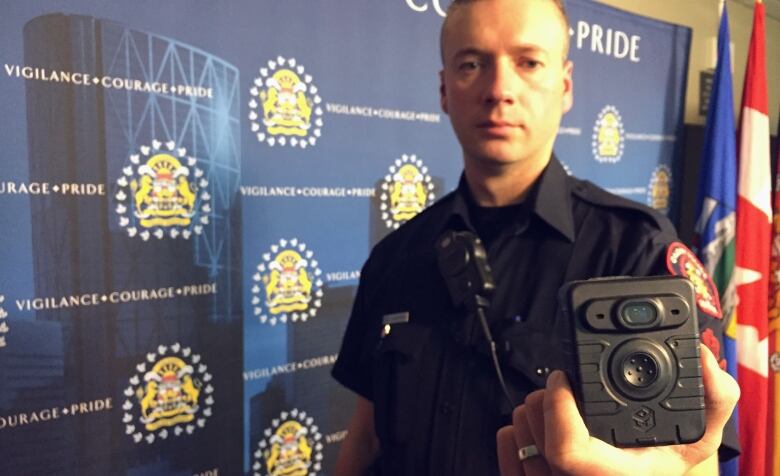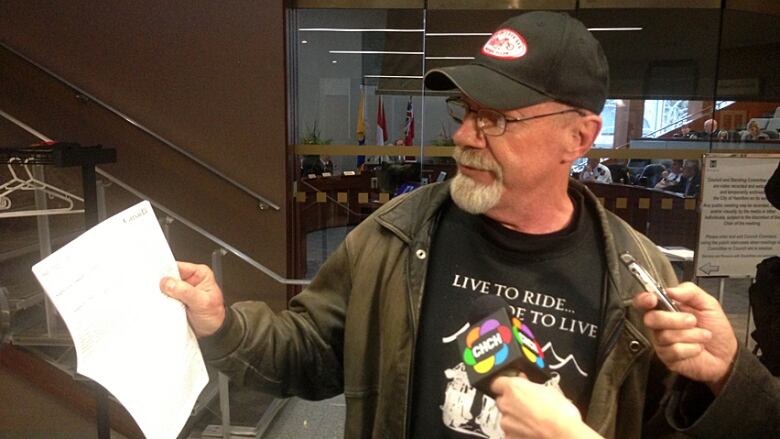Police defer body-worn camera issue again, saying Hamilton is different than the U.S.
'There are systemic issues down there that we don't have up here,' officer says

Hamilton police have once again held off onbody-worn cameras for officers, saying research doesn't show they're worth the money, and Canada doesn't have the sametensions between police and public as the U.S.
Hamilton's police services board went along with a police recommendation Thursday saying there was no need for officers to wear cameras right now. It was the third time the officers have reported back since 2014. There's no date set for when they'll come back again.
Chief Eric Girt says Canada isn't the same as the U.S., where police wear lapel cams in several cities. And two officers on the committee say for Canadian officers, it's more "a public relations issue" than a matter of public trust.
"As far as comparing us to the U.S., it's two different animals," said Supt. Mike Worster. He's part of a police committee that meets quarterly to discuss the issue.

"There are systemic issues down there that we don't have up here, to some extent. I'm not denying there could be similar issues, but not to the extent that they have in the States."
Those issues, Worster said, include those "based around concerns about race."
Police services across Canada have debated whether to use body-worn cameras. Calgary police, for example, plan to sue the company that supplies their cameras.
In Hamilton, the issue came up after the 2013 police shooting of Steve Mesic. Mesic's father-in-law, Norm Dorr, actively campaigned for them.
Terry Whitehead, board member and Ward 8 councillor, referenced that Thursday.

Body-worn camera footage, Whitehead said, would have "been a piece of the puzzle that would have brought closure to the family."
"That missing piece is so valid," he said.
"We've had a number of deaths in this community and those families are hurting because they feel the whole picture hasn't been transmitted of what has transpired. So it is about public confidence."
As for the camera issue,Worsterand Sgt. Scott Moore said a two-year pilot project would cost nearly $2 million.
Staffing would cost $774,947, they said, while 10 cameras would cost $814,757. A hundred cameras would cost $859,847.
The biggest expense, they said, was staffing to go through the mountain of footage generated each day.
Both academic research and feedback from services that use the cameras are inconclusive on whether they're effective, they said.
The discussion came up, coincidentally, on the same day that a potential carding case made headlines.
It was the final day of a hearing into whether Const. Andrew Pfeifer improperly stopped and questioned Matthew Green, Hamilton's first black city councillor. Pfeifer says he was just checking on Green's well-being. Green says it was racially motivated.












_(720p).jpg)


 OFFICIAL HD MUSIC VIDEO.jpg)
.jpg)



























































































